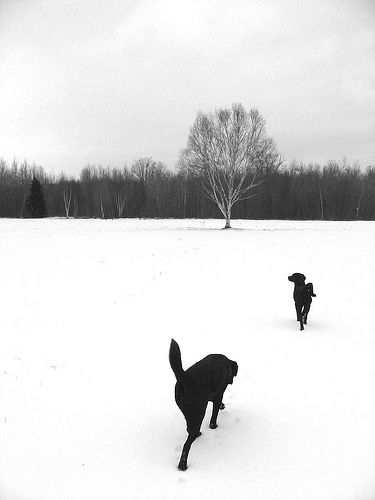Fixing My 80/20 in U-dom & Dog-dom
It's time for bold New [Academic] Year resolutions. So here's mine: I will correct my 80/20 to a 60/40 or better.
You know where this is coming from: The old 80/20 rule (an adaptation of the Pareto/Juran Principle) that we tend to spend only 20% of our time doing the things that make 80% of a significant improvement to our productivity/quality of life--and vice versa.
Of course this principle applies to dog training as well.
More on that in a sec.
As for U-dom, I've made a list of ways I spend my time during the semester. On one side of the page I listed tasks that significantly contribute to my long-term career; on the other, all the rest. As an experiment this month (through the first weeks of school) I'm going to schedule my day (using my Outlook calendar in an attempt to truly enforce this) with blocks of time devoted to tasks in the 80%-significance category. And I'm going to seek ways to make more of my 20% activities sync up with my 80%-ers. OK, pretty much every academic vows to do this every year. Including me. But I'm going to use the scheduling approach to quantify my daily activities and to track how I'm spending my time so that, at the very least, I'll be 20%-ing more mindfully.
The 80/20 rule is relevant to our relationships with dogs, too. "Dog Whisperer" Cesar Millan notes that, in the U.S., the typical relationship of a devoted dog-owner to her/his dog is a ratio of 50 to 100% Affection with 0 to 50% Play, Training, and/or Exercise when, in fact, what dogs need most is Exercise. Exercise makes dogs happy and better behaved, and exercise with their humans helps them become more closely bonded than affection alone. (Millan is sometimes criticized for being old-fashioned in his approach, but his exercise/discipline/affection formula is consistent with many others; e.g., Jon Katz and the Monks of New Skete.)
As I map out my fall commitments I must do right by the dogs, scheduling time (as firm as any other important appointment) to walk with them each day--which can be tough because I walk them separately. Millan recommends an hour per day per dog. During a typical school day I'll feel successful if I can spend 1 hour per day for both dogs--30 minutes each. (They run around outside when I'm home, but this doesn't count as "exercise-with-your-human-leader" time.) My commitment to them is that I'll make more of our time together *active* time, and make our daily walks a real priority. Even after the mouse-relocation project is done for the season.
You know where this is coming from: The old 80/20 rule (an adaptation of the Pareto/Juran Principle) that we tend to spend only 20% of our time doing the things that make 80% of a significant improvement to our productivity/quality of life--and vice versa.
Of course this principle applies to dog training as well.
More on that in a sec.
As for U-dom, I've made a list of ways I spend my time during the semester. On one side of the page I listed tasks that significantly contribute to my long-term career; on the other, all the rest. As an experiment this month (through the first weeks of school) I'm going to schedule my day (using my Outlook calendar in an attempt to truly enforce this) with blocks of time devoted to tasks in the 80%-significance category. And I'm going to seek ways to make more of my 20% activities sync up with my 80%-ers. OK, pretty much every academic vows to do this every year. Including me. But I'm going to use the scheduling approach to quantify my daily activities and to track how I'm spending my time so that, at the very least, I'll be 20%-ing more mindfully.
The 80/20 rule is relevant to our relationships with dogs, too. "Dog Whisperer" Cesar Millan notes that, in the U.S., the typical relationship of a devoted dog-owner to her/his dog is a ratio of 50 to 100% Affection with 0 to 50% Play, Training, and/or Exercise when, in fact, what dogs need most is Exercise. Exercise makes dogs happy and better behaved, and exercise with their humans helps them become more closely bonded than affection alone. (Millan is sometimes criticized for being old-fashioned in his approach, but his exercise/discipline/affection formula is consistent with many others; e.g., Jon Katz and the Monks of New Skete.)
As I map out my fall commitments I must do right by the dogs, scheduling time (as firm as any other important appointment) to walk with them each day--which can be tough because I walk them separately. Millan recommends an hour per day per dog. During a typical school day I'll feel successful if I can spend 1 hour per day for both dogs--30 minutes each. (They run around outside when I'm home, but this doesn't count as "exercise-with-your-human-leader" time.) My commitment to them is that I'll make more of our time together *active* time, and make our daily walks a real priority. Even after the mouse-relocation project is done for the season.



0 Comments:
Post a Comment
<< Home